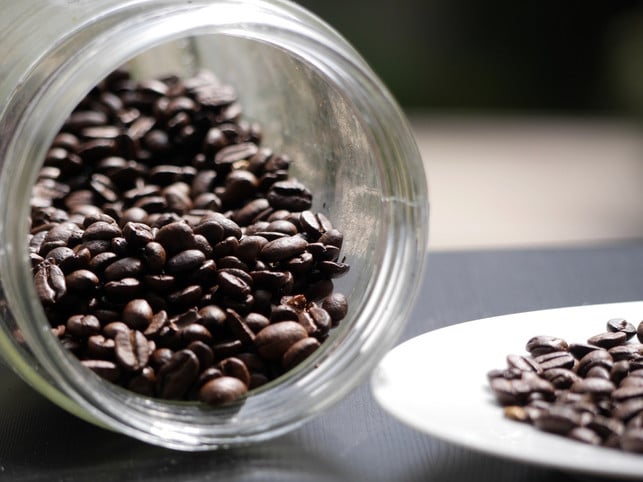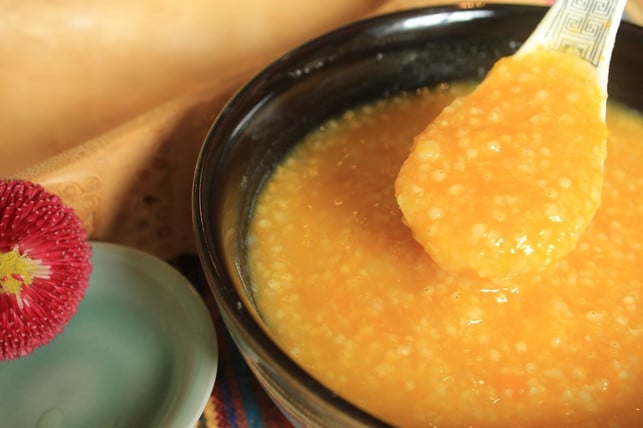
Furan can form when foods are heated and can occur, for example, in roasted coffee. Experts warn that too much furan is unhealthy. The substance is even on the official list of substances of particular concern.
Furan is an organic substance with no odor or color, which is primarily known as an intermediate in the chemical industry – but also occurs in the food industry. This is mainly due to furan’s low boiling point: the substance becomes gaseous at just 31 degrees.
Furan can also form when food is heated, for example during the production of finished products (canned food). The substance is created, for example, when carbohydrates, polyunsaturated fatty acids or amino acids from protein are broken down, according to the Federal Institute for Risk Assessment (BfR). Furan can also be formed when coffee beans are roasted – the levels here are particularly high.
This is particularly concerning because, according to the European Food Safety Authority (EFSA), furan could pose health risks in large quantities.
Furan: Where is the substance found?

Furan can be formed when a wide variety of products are heated:
- According to the BfR, furan can be found primarily in finished products “that are exposed to high temperatures in closed containers”. These include, for example, canned goods. Furan can also be found in cocoa, nuts and popcorn.
- Furan can also be found in coffee, which is related to the roasting of the beans. Here, experts from the European Food Safety Authority (EFSA) demonstrated particularly high furan contents in a study and published them together with the results of other researchers.
- The scientists in the EFSA study also detected furan in infant formula.
However, there are big differences between the furan levels found: instant coffee has hardly any furan, while freshly roasted coffee beans contain the most furan. In the end, the finished brewed coffee has significantly less furan than the roasted beans themselves, as only a small portion of the furan passes from the beans into the coffee.
The furan levels also vary greatly in baby food: there is very little furan in fruit jars, but significantly more furan in jars containing vegetables and/or meat. Products containing fat and protein contain more furan than others, explains the Bavarian State Office for Food Safety (LGL).
According to the study, some other products also contain furan. However, the amounts found are extremely small:
- According to the EFSA study, furan is found in very small amounts in juices, dairy products (for example in sweetened condensed milk) and corn and rice cakes.
- Researchers have also found some furan in beer, ready-made soups, soy sauce and canned fish, the study says. The substance can also be found in the crust of toast.
-
According to a study by the LGL, crispbread, rusks and oatmeal as well as muesli also contain small amounts of furan.
How dangerous is furan for health?

Experts warn that a lot of furan is unhealthy, especially in large quantities:
- As early as 1995, the International Agency for Research on Cancer (IARC) classified furan as “possibly carcinogenic to humans.”
- The Federal Institute for Risk Assessment has now also written that furan has been shown to be carcinogenic in animal studies. Furan can also cause liver damage.
- Furan is on the list of particularly critical substances by the EU chemicals agency ECHA.
However, it is still unclear whether furan has the same effects on humans as in animal experiments. To date, there are neither legal limits nor guidelines or maximum amounts for furan in food.
Who is at risk?

According to the BfR, anyone who eats a particularly large number of foods containing furan may be at “health risk”. Infants are particularly affected, as the furan content in baby food can be quite high and this is the infants’ main food at a certain age.
The experts at the BfR advise
-
Always stir heated food well because furan can escape from the food. This reduces the amount of furan consumed through food.
- You should also not heat food too much: toast, rolls and bread should not be baked too dark. “Gold plating instead of charring,” recommend the experts. As the degree of roasting increases, the furan content also increases.
The BfR concludes that anyone who cooks with fresh food does not have to worry about furan. In addition, a balanced and varied diet ensures that the intake of furan from food is reduced.
More on the topic at Techzle\.com:
- Arsenic in food: occurrence, dangers and what you need to know
- Coffee grind: The right coffee powder for every type of preparation
- Coffee with milk: How to prepare café au lait yourself
Edited by Freya Petersen
** marked with ** or orange underlined Links to sources of supply are partly partner links: If you buy here, you are actively supporting Techzle\.com, because we then receive a small part of the sales proceeds. More info.